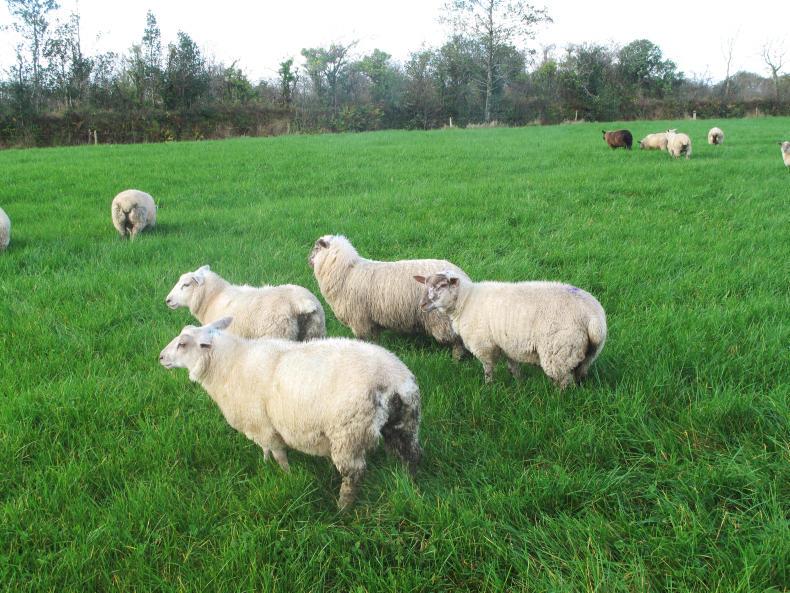Indoor finishing
With ground conditions deteriorating, finishing forward lambs indoors will be an option considered by some producers in the coming weeks. Having lambs trained to eat meals in advance of housing will lead to a much smoother transition. It is also important to monitor intake once lambs are housed. This is particularly relevant to hill lambs, as some invariably will be slow or even refuse to eat meals. These will need to be removed to a separate pen, or in some cases, let back outdoors for a while.
Once eating adequately, it is important to keep the diet consistent. Where lambs are offered ad lib concentrates, the volume offered should be balanced to avoid meal running out, while also preventing surplus feed accumulating and posing a risk of spoiling, leading to sheep going off their feed or causing digestive upsets.
Teagasc recommends including Ammonium Chloride at 0.5% of the finishing diet to protect against urinary calculi while offering lambs a good supply of fresh water. Withdrawal periods of health treatments should be watched carefully, as lambs can perform excellently on high concentrate diets and reach slaughter weight far quicker than anticipated.
Scottish Blackface lambs will typically average 200g to 220g daily on a high concentrate diet indoors, while crossbred and lowland lambs will achieve daily liveweight gains ranging on average from 260g to 280g. Research from Teagasc Athenry shows it is the individual performance of some lambs that can catch out producers, with lowland lambs which have developed a frame capable of gaining upwards of 400g daily. As such, the importance of regular weighing cannot be stressed enough. With intake levels averaging 1kg to 1.2kg for hill lambs and 1.2kg to 1.4kg for lowland or crossbred lambs, there is little point in feeding lambs to heavier weights. Finishing lambs on silage and meal is only really a runner where farms have access to excellent quality silage with a dry matter digestibility (DMD) level in the mid to high 70s.
Fertility issues
It is highly worthwhile to raddle rams to estimate the lambing date and allow targeted feeding in late pregnancy, which will help reduce costs. It also helps greatly in identifying fertility issues. Where practicing single sire mating, switching rams during or at the end of a cycle will lessen the effect of an infertile or sub-fertile ram. Running rams in groups will also help, but again, raddling is advised to pick up any issues.
Sheep welfare scheme records
There are a number of measures where records may need to be brought up to speed. Farmers who selected lameness control need to assess the flock prior to mating, with one more assessment between mating and lambing left to carry out thereafter. For farmers who carried out the parasite control option between 1 June and 30 September, now is a good time to record relevant information. The same applies to the flystrike control measure.
The requirements of mineral supplementation post-mating are well documented, but for those in doubt, the day post mating commences is the day ewes are joined with rams. Supplementation must provide cover for a minimum of 60 days and this can be done by administering one product which provides a sufficient period of cover, or a combination of products.






 This is a subscriber-only article
This is a subscriber-only article









SHARING OPTIONS: